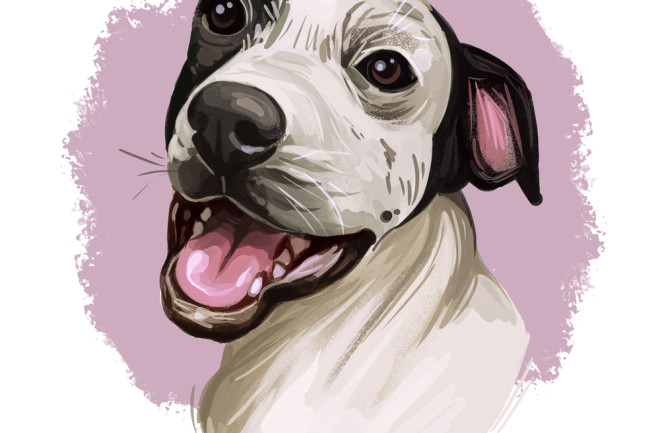Humans first domesticated dogs some 14,000 years to 29,000 years ago, though this is still up for debate. While it’s settled science that they evolved from grey wolves — the debate over where and how is still far from settled.
Research has called into question the belief that all dogs evolved from the same Eurasian grey wolf population, suggesting there could have been both a western and eastern Eurasian wolf population from which dogs descended. What is known is that dogs and humans have lived and worked together for millennia. Over the years, and for various reasons, certain dogs have become extinct. Here are five of them.
1. The Córdoba
Named for the Argentinian province from where it was first bred, the Córdoba is a cross between a mastiff, bull terrier and English bulldog —among others. These ferocious dogs had strong, muscular bodies, with males weighing up to 90 pounds. Created in the late 1800s, they were first popularized in South America and eventually sent to the U.K. for dog fighting.
The Córdoba was so vicious that breeding was problematic, as they would often attack each other rather than mate. Armed with a high pain tolerance, they would fight to the death. Another purpose they served was hunting. By the mid-1900s, the Córdoba breeders transformed them into the Dogo Argentino, which still exists today.
Read More: Dogs and Their Owners Share Similar Personality Traits
2. The Hawaiian Poi Dog
Polynesian settlers brought these small pariah dogs to Hawaii more than 1,000 years ago. Believed to be a protector of children, a Poi dog puppy was given as a gift when a new baby was born into a native Hawaiian tribe. If a child died young, the dog was killed and buried with them.
People also used the dogs as food and were fed only poi, as meat was too valuable at the time to feed to dogs. Their limited diet led to various health problems, but it also caused weight gain—which was desirable when it came time to eat them. The breed became extinct due to the disappearance of the native religion and the practice of consuming dog meat became negatively viewed.
Read More: Dogs Have Co-Evolved With Humans Like No Other Species
3. The Moscow Water Dog
Following World War II, Red Star Kennels — part of Russia’s military —developed several new dog breeds. One of their new breeds was the Moscow water dog. Created to carry out water rescues, these dogs weighed more than 100 pounds.
While they were agile and athletic swimmers who could withstand cold water, the military encountered unexpected problems with these canines. Since the Moscow water dog was a mix of Newfoundland and Caucasian shepherds, the military unsuccessfully attempted to mitigate their aggressive nature by breeding more Newfoundland into the bloodline, as their nature was gentler. This failure led to the end of the program by the early 1980s.
Read More: How Dogs Perceive Time
4. The Tahltan Bear Dog
Raised by the indigenous Tahltan people of northern British Columbia, this small dog was first documented in 1824 by fur trader Samuel Black — although it’s believed that they existed for hundreds of years. Living alongside families in hunting camp tents, they were friendly and gentle with people and other small animals.
The hunter would carry the dog in a sack on their back until a bear was spotted. Then they would release the dog, which would distract, harass and confuse the bear with its yapping. This allowed the hunter to move closer with their bow and arrow, enabling a better shot. Their numbers faded as the use of firearms increased, with the last known Tahltan bear dog dying in 1979.
Read More: Why Do Dogs Turn Their Heads to One Side?
5. The Turnspit
The turnspit could be found in most large British kitchens from the late 16th century through the mid-19th century. Kitchen staff forced them to run on a wheel that would turn meat as it roasted over a fire. The constant running meant that the meat of that time (boar, deer, or large birds) would perfectly cook the meat. In fact, their Latin name, “vernepator cur,” means “dog that turns the wheel.”
When the turnspit would tire from endless hours running on the wheel, kitchen staff would throw hot coals at their feet to speed them up. The dogs’ only time off was on Sundays when the owners would take them to church with the family. The invention of a device called a clock jack rendered the turnspit obsolete.
Read More: 5 Dog Breeds That Have Changed Over The Past 100 Years

